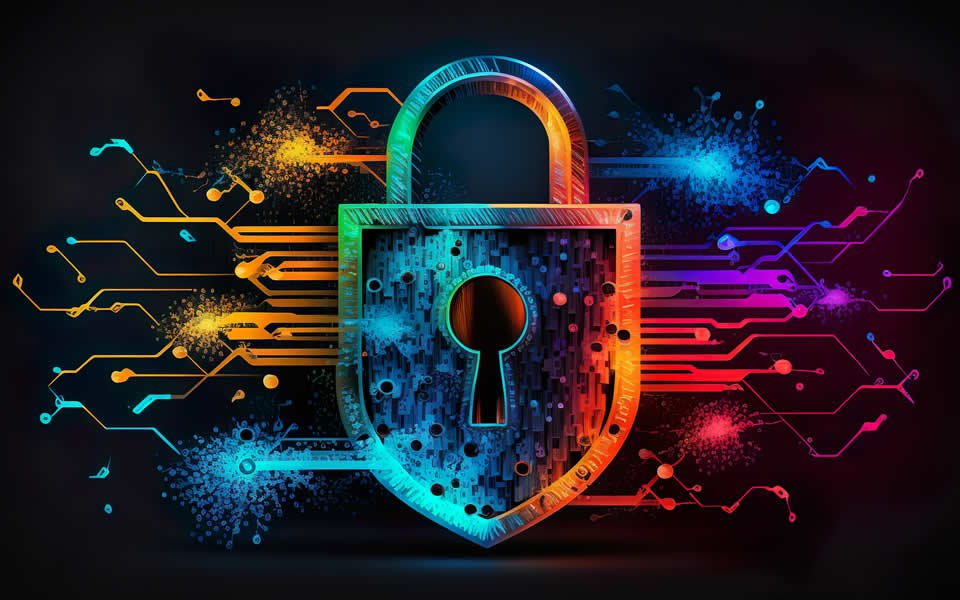Introduction
Today cyber security is a part of the whole societies, hence the importance of this subject. Therefore, it ranges from data protection for an individual, an organization or a company, to the protection of data for the government department or even for protecting the Country’s infrastructure, so that makes information protection critical to it. Specifically, this article presents the definitions of the cybersecurity, the concept, main complexes of technologies, the problems and questions, threats and tendencies of the sphere.
Understanding Cybersecurity
Information technology security that is commonly known as cyber security refers to the safeguard of information and technology assets from cyber criminals or other entities or individuals wishing to harm them. In this, the term is a room broader one as it encompasses the procedures, techniques and processes used to guard the information from incursions and threats from the cyber world without compromising its confidentiality and integrity or accessibility.
Confidentiality: Of ensuring that the information is protected as that only the personnel that is suppose to have a view to it, will have a view to it. This involves the secrets that it has to protect from release to other people other than the intended recipient.
Integrity: Maintenance of the information’s quality and the amount of information provided. This means protection from such changes for it to remain as it is and not to be opened by any other person that is not allowed to open it.
Availability: Its roles include ensuring that a given information or resource is brought to the admitted personnel each time it is needed. This involves the protection against any kinds of interferences and ensuring rather than agreeing to availability of systems and information where they may be needed in business.
Key Concepts in Cybersecurity
To understand cybersecurity more deeply, it is essential to grasp some fundamental concepts:For more profound perception of the issue let’s inspect several key notions of cybersecurity:
Threats:
Malware: Virus on the other hand can be defined as a collection of code that are written with a preeminent aim of inflicting losses on computers and their application. Some of the examples of malware are Viruses, Worms, Ransomware and Spyware.
Phishing: One of the social engineering tactics that use fake items such as email or website to help one get information from the other party without force.
Vulnerabilities:
Software Vulnerabilities: We can define it as a weakness in a program that can help age it.
Configuration Issues: Poor systems or insecurity in systems that creates opportunities that the attackers can exploit.
Human Factors: The reckless handling by the people or the carelessness in the form of making a simple guess for the password or following the link received through the email.
Attacks:
Denial of Service (DoS): One of the techniques that can be employed when trying to make a specific system or network unavailable through the use of flood it.
Man-in-the-Middle (MitM): It is the action where the attacker interrupts the communication process of two parties and is also likely to alter it without the consent of the two communicating parties.
SQL Injection: An attack, which targets specific vulnerabilities in web applications so as to execute SQL Codes and manage databases.
Defense Mechanisms:
Firewalls: The more common aspects of technologies mainly employed with regards to the filtering and routing of traffic in consideration with the stipulated security measures.
Antivirus Software: Some of these are the anti malware programs which can help in the identification of the mere existence of the malware in the systems besides helping in the prevention of the malware from penetrating into the systems and also helping in eradicating the malware from the systems.
Encryption: The mechanism of how that information was being converted so that it could not be retrieved by any other person who was not privilege to it. Safe relates to the proper storage of data and the Providing protection to the information is protected with encryption.
Cybersecurity Technologies
Various technologies play a crucial role in cybersecurity, each addressing different aspects of digital security:A number of technologies are involved in the operation of cybersecurity and each of them is aimed at the protection of certain aspects of security.
Cybersecurity Practices
Effective cybersecurity involves a combination of technologies, processes, and best practices:Cyber security can be said to be the layout of good technology, procedure and fine standards.
Risk Management:
Risk Assessment: The approach of screening and assessing threats totaling to risks an organization’s property and its networks, information, and activities could encounter.
Risk Mitigation: Thus, among implemented risks, it is worth identifying – application of security controls and the evaluation of the company’s security situation periodically.
Incident Response:
Incident Detection: The verification of the monitoring and analysis for confirmation of the security incidents which has been identified.
Incident Containment: Measures – that are being taken – after the happenance of the case to avoid the repetition of the case again.
Incident Eradication: This could include elimination of the condition that gave rise to the occurrence and prevention of any lack that was formerly utilized whenever an attack was in progress.
Incident Recovery: POSITIVE IMPACTS: the capabilities of the recovered systems and data, and the use of the performed actions for improvement of conditions of the organization.
Security Policies and Procedures:
Access Control Policies: Establishing guidelines on how the donating and the regulating of access to systems and information is to be performed.
Data Protection Policies: Formulating policies about the kind of information to be collected and how the information is to be treated and safeguarded.
Training and Awareness: There is a realization of awareness to create consciousness amongst the employees regarding Phishing and also to ensure that the employees enter long passwords correctly plays an important role in the security of the organization.
Vulnerability Management:
Patch Management: Convenient to use, in order to cover and seal a definite vulnerability connected with a failure.
Vulnerability Scanning: With regard to the tools, it is necessary to search for the weak points in the systems and networks to enhance the protection.
Backup and Recovery:
Regular Backups: Serverizing means replication of the critical data on time in such a manner that if one or all of them are missing or are in the process of being declared as useless their editions can be created easily.
Disaster Recovery Planning: Creating and evaluating plans for how an organization should respond to appalling incidences that interrupt the functioning of an organization.

The Evolving of threat landscape
Advanced Persistent Threats (APTs):
Long-Term Attacks: APTs are long full-scale counter attacks that are targeted at specific organizations/persons. These are marked by clandestine and gradual processes with the intent of avow overtly gaining access to an organization’s networks in order to acquire information.
Ransomware:
Cryptocurrency Demands: Ransomware is one of the most hazardous types of a virus that can attack the data and after the encoding ask for money in the form of cryptocurrency. More often, the performance of such attacks is reported and they have the repercussions on the business institutions.
IoT Security:
Connected Devices: Once again, the security disadvantage comes into perspective as more objects are incorporated into the internet as IoT apparatus. A lot of the IOT devices lack proper security or else they possess pitiful security on the same note these devices are very vulnerable.
Artificial Intelligence and Machine Learning:al Intelligence and a branch of computer science called Machine Learning
AI-Powered Attacks: AI and/or machine learning is used in attacks to grow and/or improve the approaches in use; thus increasing the probability of employing the tool.
AI-Driven Defense: On the other hand AI and machine learning are also incorporated into the cybersecurity systems in order to enable the best detection of the existing threats, analysis of the patterns of the threats and handling of the incidents that may arise.
Regulatory Compliance:
Data Protection Regulations: Organizations tend to follow the typical business regulations, including the legal ones like GDPR and CCPA (General Data Protection Regulation and California Consumer Privacy Act) by rules involving data protection.
Importance of Cybersecurity
It is significant in several ways and on the following grounds:
Protection of Sensitive Information:
Personal Data: Preserving an individual’s information including; account details, credit card details, and medical history from theft and misuse.
Intellectual Property: Protecting other people’s work and business information from being hounded down by hackers, or any other competitors.
Business Continuity:
Operational Stability: Ensuring that business continues and the private is protected from computer based threats.
Reputation Management: Therefore by fulfilling the demand for confidentiality, one is in a position to maintain customers and stakeholders’ confidence and credibility hence strengthening their relations with them.
National Security:
Critical Infrastructure: Protecting the tactical aspects including the energy source, the transport systems, and the cash related structures that are radically in protection of any country.
Legal and Financial Implications:
Regulatory Compliance: Compliance to the organizational policies and standards on conformity to the laid down legislations on data and cybersecurity.
Financial Losses: In order to cut down on the likelihood of losing money such as in penalties or fines that might be incurred, cost incurred in regaining data or compensating the affected parties or companies, and any untoward reputation in the market place.
The Occupation of People Working in the Cybersecurity Industry
Cybersecurity can be described as a growing field crucial in protecting organizations from cyber-related risks. This group of people is responsible for formulation of security structures for the systems as well as information. Key responsibilities of cybersecurity professionals include:These are some of the main tasks that cybersecurity personnel are expected to perform:
Risk Assessment: Identify potential threats and measures to evaluate threat factors in the scope of system and network systems.
Incident Response: Cyberevents are of two types, they include the operational strategies of dealing with cyberevents as well as the actual execution of these strategies.
Security Monitoring: Performs a constant threat and anomaly scan for systems.
Compliance: The legal compliance therefore refers to the act whereby an organization makes sure that it has adhered to all the legal dimensions and such standard working practices as are provided in the law.
Education and Training: Performing the organization of training and providing oriented informational materials for employees of the field of cybersecurity.
Future Trends in Cybersecurity
That is why, as the advance of modern technologies is not ceasing and new segments of life’s existence are filled with digital devices and programs, new and variegated techniques are applied by the evil powers. These threats are very hard to combat, and the only thing that can be done in this regard is to make sure that one is always looking out for such things, and constant learning of the trends. Some future trends in cybersecurity include:Certain trends in the world of cybersecurity can be set up for the future:
Centralization of learning algorithms or ‘’Artificial Intelligence ‘’ (AI) & Machine Learning
At the moment artificial intelligence and machine learning are being incorporated in cybersecurity. These technologies can help in analyzing the large set of data based on any pattern and anomalies and thus it can facilitate in detecting threats and to defend them much faster. Antivirus that can employ the use of artificial intelligence can be quite flexible as far as the threats are concerned and therefore, be part of a reactive security system.
Zero trust architecture on the other hand refer to a security model that provides security to a user or system even if he or it is within the organization’s network. It requires a strict identification for all users and terminal devices that want to connect to the resources. This is the case since through adoption of zero trust, one is able to limit and confine internal threats and get out of the messy trap of having so many threats within the company.
Conclusion
Cybersecurity is a fast-evolving and an essential, fundamental discipline that is needed in the protection of this digital era. In view of this, it can be summarized that as the threats in the cyber world change, so should our defenses. Hence, the practice of hard and soft measures, sensitization, information sharing, and proactive measures will help containment of security threats, protection of systems, data, and in the long run, our way of living.








3 thoughts on “What is Cybersecurity?”